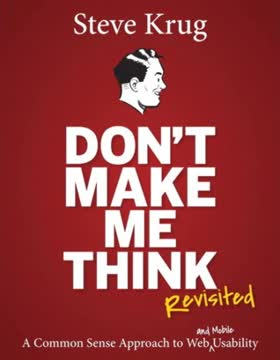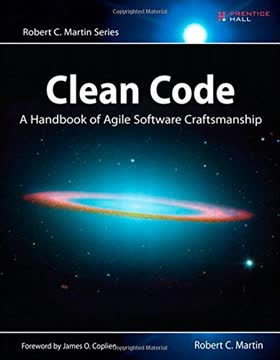Key Takeaways
1. Elixir: Functional Programming with Immutability and Concurrency
Programming is about transforming data, and the |> operator makes that transformation explicit.
Functional paradigm. Elixir is a functional programming language that emphasizes immutability and concurrency. It runs on the Erlang VM, inheriting its robust concurrency model and fault-tolerance capabilities. Elixir code is organized into small, independent processes that can run concurrently and communicate via message passing.
Immutability and transformation. In Elixir, data is immutable, meaning once created, it cannot be changed. Instead of modifying existing data, functions in Elixir transform data, producing new values. This approach leads to more predictable and easier-to-reason-about code, especially in concurrent environments.
Pipe operator. The |> (pipe) operator is a key feature in Elixir, allowing developers to chain function calls in a readable, left-to-right manner. This operator takes the result of the expression on its left and passes it as the first argument to the function on its right, making data transformations explicit and easy to follow.
2. Pattern Matching: The Foundation of Elixir's Elegance
In Elixir, the = sign is not an assignment. Instead it's like an assertion.
Match operator. Pattern matching is a fundamental concept in Elixir, used extensively for destructuring data and control flow. The = sign in Elixir is not an assignment operator but a match operator. It attempts to make the left side match the right side, binding variables in the process.
Destructuring. Pattern matching allows developers to easily extract values from complex data structures:
- Lists: [head | tail] = [1, 2, 3] binds head to 1 and tail to [2, 3]
- Tuples: {a, b, c} = {1, 2, 3} binds a to 1, b to 2, and c to 3
- Maps: %{key: value} = %{key: "example"} binds value to "example"
Function clauses. Pattern matching is also used in function definitions, allowing multiple function clauses with different patterns. This enables concise and expressive code, as the appropriate clause is selected based on the input pattern.
3. Lists and Recursion: The Building Blocks of Elixir Programs
To iterate is human, to recurse divine.
List structure. Lists in Elixir are implemented as linked structures, consisting of a head (first element) and a tail (the rest of the list). This structure naturally lends itself to recursive processing.
Recursive processing. Elixir encourages a recursive approach to list processing, which often leads to more elegant and efficient solutions compared to imperative loops. Common list operations:
- Length: recursively count elements
- Map: apply a function to each element
- Reduce: accumulate a result across all elements
- Filter: select elements meeting a condition
Tail-call optimization. Elixir implements tail-call optimization, allowing efficient recursion without stack overflow concerns. This optimization is applied when the recursive call is the last operation in a function, effectively turning the recursion into a loop.
4. Modules and Named Functions: Organizing Elixir Code
Modules provide namespaces for things you define.
Code organization. Modules in Elixir serve as containers for related functions, providing a way to namespace and organize code. They are defined using the defmodule macro and can contain function definitions, macros, and other module attributes.
Function definitions. Named functions are defined within modules using the def macro. Multiple clauses of a function can be defined, each with its own pattern matching on the arguments. Private functions (only callable within the module) are defined using defp.
Key features of Elixir modules:
- Documentation: @moduledoc and @doc attributes for inline documentation
- Attributes: Module attributes defined with @ for configuration and metadata
- Imports and aliases: Bringing functions from other modules into scope
- Behaviors: Defining interfaces that modules can implement
5. Concurrency Model: Lightweight Processes and Message Passing
Elixir developers are so comfortable creating new processes, they'll often do it at times when you'd have created an object in a language such as Java.
Actor model. Elixir adopts the actor model of concurrency, where each actor (process) is an independent entity that can send and receive messages. These processes are extremely lightweight, allowing thousands or even millions to run concurrently on a single machine.
Process creation and communication:
- spawn: Create a new process
- send: Send a message to a process
- receive: Receive and pattern match on incoming messages
Linking and monitoring. Processes can be linked or monitored, allowing for robust error handling and fault tolerance:
- link: Bidirectional connection; if one process crashes, the linked process also crashes
- monitor: Unidirectional; the monitoring process is notified if the monitored process crashes
6. OTP: The Framework for Building Scalable and Fault-Tolerant Applications
Supervisors are the heart of reliability.
OTP behaviors. OTP (Open Telecom Platform) provides a set of behaviors for building scalable and fault-tolerant applications:
- GenServer: For implementing client-server relationships
- Supervisor: For managing and restarting child processes
- Application: For packaging and managing OTP applications
Supervision trees. OTP applications are structured as supervision trees, where supervisor processes monitor and manage worker processes. This hierarchical structure allows for fine-grained control over process lifecycle and error handling.
Hot code swapping. OTP supports hot code swapping, allowing for updating running applications without downtime. This feature, combined with the supervision tree structure, enables the creation of highly available systems.
7. Metaprogramming: Extending Elixir with Macros and Protocols
Macros are expanded before a program executes, so the macro defined in one module must be available as Elixir is compiling another module that uses those macros.
Macros. Elixir's macro system allows for powerful metaprogramming capabilities. Macros operate on the abstract syntax tree (AST) of the code, enabling code generation and transformation at compile time.
Key concepts in Elixir metaprogramming:
- quote: Capture the AST of a code block
- unquote: Inject values into quoted expressions
- using: Define behavior when a module is "used"
Protocols. Elixir protocols provide a mechanism for polymorphism, allowing functions to behave differently based on the data type they receive. This enables extensibility without modifying existing code.
Protocol features:
- defprotocol: Define a protocol with function signatures
- defimpl: Implement a protocol for specific data types
- Fallback implementations: Handle types not explicitly implemented
Metaprogramming in Elixir allows for creating domain-specific languages, extending the language's syntax, and implementing powerful abstractions.
Last updated:
FAQ
What's Programming Elixir about?
- Functional Programming Focus: Programming Elixir introduces readers to functional programming using the Elixir language, emphasizing immutability and data transformation.
- Concurrency and Scalability: It highlights Elixir's strengths in building concurrent and distributed applications, leveraging the Erlang VM for fault tolerance and scalability.
- Practical Learning Approach: The author, Dave Thomas, uses a hands-on approach with code examples and exercises to solidify understanding and application of concepts.
Why should I read Programming Elixir?
- Comprehensive Coverage: The book provides a thorough exploration of Elixir, suitable for both beginners and experienced programmers, covering fundamental and advanced topics.
- Focus on Concurrency: It delves into Elixir's ability to handle concurrent programming effortlessly, invaluable for developers working on scalable applications.
- Expert Guidance: Written by a respected figure in the programming community, it offers insights and best practices to help readers avoid common pitfalls.
What are the key takeaways of Programming Elixir?
- Functional Programming Principles: Readers learn about immutability, first-class functions, and higher-order functions, foundational for effective Elixir code.
- Concurrency and Fault Tolerance: The book emphasizes Elixir's concurrency model and building fault-tolerant applications using OTP.
- Real-World Examples: Numerous examples and exercises illustrate how to apply Elixir concepts in real-world scenarios, reinforcing learning.
What are the best quotes from Programming Elixir and what do they mean?
- "Programming Should Be About Transforming Data": This quote encapsulates the philosophy that programming is more about data manipulation than state management.
- "Let the process crash.": Reflects the philosophy of fault tolerance, encouraging systems that recover from failures rather than preventing them.
- "Elixir is here to free you from antiquated concurrency mechanisms": Emphasizes Elixir's modern approach to concurrency, simplifying scalable application development.
How does Programming Elixir approach teaching functional programming?
- Hands-On Examples: Uses practical examples and exercises to teach functional programming concepts, promoting active engagement.
- Incremental Learning: Concepts are introduced incrementally, building on previous knowledge for a comprehensive understanding.
- Emphasis on Immutability: Highlights the importance of immutability, explaining how it leads to safer and more predictable code.
What is the significance of pattern matching in Elixir?
- Core Concept: Pattern matching is fundamental in Elixir, allowing developers to destructure data easily and bind variables concisely.
- Control Flow Simplification: It simplifies control flow by enabling functions to have multiple clauses matching different patterns.
- Versatile Tool: Used extensively in function definitions, case statements, and variable assignments, making it a versatile tool in Elixir programming.
How does immutability affect programming in Elixir?
- No Side Effects: Immutability ensures data cannot be changed after creation, eliminating side effects and simplifying code reasoning.
- Concurrency Benefits: Simplifies concurrent programming by removing the need to manage shared state, reducing synchronization complexity.
- Data Transformation Focus: Encourages thinking in terms of data transformations, leading to cleaner and more functional code.
How does Programming Elixir address concurrency in Elixir?
- Actor Model Introduction: Introduces the actor model of concurrency, where processes communicate through message passing.
- Lightweight Processes: Elixir allows the creation of lightweight processes, enabling many tasks to run simultaneously without threading issues.
- Fault Tolerance Emphasis: Leverages the Erlang VM's capabilities to create resilient applications, emphasizing fault tolerance in concurrent systems.
What is the role of the Enum and Stream modules in Elixir?
- Collection Processing: The Enum module provides functions for processing collections, allowing iteration, filtering, and data transformation.
- Lazy Evaluation: The Stream module enables lazy evaluation, computing values only when needed, improving performance and reducing memory usage.
- Composability: Both modules support composable operations, allowing developers to build complex data processing pipelines clearly and concisely.
What is the significance of OTP in Programming Elixir?
- Framework for Applications: OTP is a set of libraries and design principles for building robust applications in Elixir.
- Supervision Trees: Explains creating supervision trees for monitoring and restarting processes, crucial for application reliability.
- Concurrency Model: OTP's concurrency model allows scalable applications handling many processes simultaneously, vital for leveraging Elixir's strengths.
How does Programming Elixir explain the concept of processes?
- Lightweight Processes: Elixir processes are lightweight and managed by the Erlang VM, allowing thousands of concurrent processes.
- Message Passing: Emphasizes the message-passing model for process communication, promoting decoupling and fault tolerance.
- Supervision and Fault Tolerance: Details using supervisors to monitor processes and handle failures gracefully, essential for resilient applications.
What advanced topics are covered in Programming Elixir?
- Macros and Metaprogramming: Explains macros for extending the language and creating domain-specific constructs.
- Protocols for Polymorphism: Introduces protocols for achieving polymorphism, promoting code reuse and flexibility.
- Umbrella Projects: Discusses managing multiple related applications within a single project structure, useful for large codebases.
Review Summary
Programming Elixir is highly praised for its clear explanations and effective teaching of Elixir concepts. Readers appreciate its coverage of functional programming, concurrency, and OTP basics. The book is considered an excellent introduction for newcomers to Elixir, with well-structured content and helpful exercises. Some readers found certain sections lacking depth, particularly in OTP and advanced topics. The writing style is generally engaging, though a few found it condescending. Overall, it's recommended for those interested in learning Elixir, especially when complemented with additional resources.
Similar Books
Download PDF
Download EPUB
.epub digital book format is ideal for reading ebooks on phones, tablets, and e-readers.











